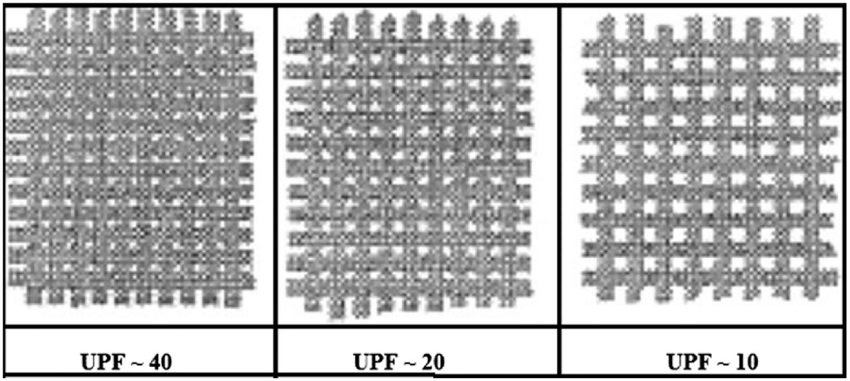Sun Protective (UPF) Clothing: Clothing Smart to Shield Your Skin
Do we really need sun protective (UPF) clothing during outdoor activities? Well, you may agree the answer is, Yes. Ultraviolet A or UVA rays are very much present all year round. Although Sunscreen is convenient, it may not be enough due to insufficient and uneven application; a sunhat is too small to cover the face and arms. Therefore, it is necessary to get a suitable sun protection clothing, and it doesn’t just look great. It also absorbs or blocks harmful UV radiation and remains one of the most effective forms of protection against sun damage and skin cancer, it is particularly important to have a reliable sun protection clothing. Here, we’ll talk about the factors that make clothing sun-protective and give some tips to effectively protect your skin from the sun.

If you searching for sun protective clothing, you may find there are a bunch of products with different brands and styles, besides the material content, there is also a description for the UPF rating with a different number in their labels. What are UPF and the number stands for? Ultraviolet Protection Factor (UPF) indicates the fraction of UV radiation (both UVB and UVA) that a given fabric material allows reaching your skin. For example, a UPF 50 fabric allows two percent (1/50th) UV radiation in and blocks 98 percent of the sun’s rays, thus reducing your exposure risk significantly.
Factors That Make Clothing Sun Protective
We know that clothing shields you from the sun, but not all colors and fabrics provide equal protection. When shopping for apparel that can effectively shield you from harmful rays, keep these factors in mind that can indicate how protective clothing is:
1. UPF: Some clothing makers provide UPF labels, which indicate exactly how much of the sun’s rays the garment can shield. A piece of fabric must have a UPF of 30 to qualify for a seal of recommendation from the Skin Cancer Foundation. A UPF of 30 to 49 offers very good protection, while UPF 50+ rates as excellent.

2. Material Content: The composition of the fabric is important for UV protection. Unbleached cotton contains natural lignin that acts as UV absorbers. Polyesters and lightweight satiny silks can be highly protective because they reflect sun radiation. High-tech fabrics treated with chemical UV absorbers or dyes prevent some penetration from UV rays.
3. Clothing Color: Generally, dark or bright colors keep UV rays from reaching your skin by absorbing them rather than allowing them to penetrate. According to the research article from Photodermatol Photoimmunol Photomedince 2012, red, black, and navy blue all have better sun protection effects. Dark colors clothes will absorb some heat, but the absorbed heat can also become the driving force for the airflow inside the clothes, thereby taking away a little bit of heat from the skin surface. That’s why these colors offer better protection than lighter shades.
4. Material Fit: Loose-fitting clothing offers more protection. Tight clothing can stretch and reduce the level of protection offered, as the fibers pull away from each other and allow more UV light to pass through.

5. Clothing Wetness: If your clothing gets wet, it will lose up to half of its protective ability and become more transparent regardless of the fabric’s UPF rating.
6. Skin Coverage: The more skin your clothing covers, the better protection you have. So, choose long-sleeved shirts and long pants or skirts.
General Recommendations About UV Protective
| 1. Clothing labeled as UV protection with a UPF of 50+ is preferred |
| 2. The less transparent a fabric is to visible light, the better the UV protection is |
| 3. The darker the color of the fabric, the better the UV protection is |
| 4. Polyester or polyester blends usually offer better UV protection |
| 5. Stretch and wetness of cotton fabrics significantly decrease their UPF |
| 6. Looser fits are preferable; the garment should cover the skin as much as possible |
| 7. New clothing, especially cotton fabrics, should be washed before wearing |
Last, here are some tips for you when you enjoy outdoor activities:
- Avoid exposure to the sun whenever possible;
- Wear UV-ray protective sunglasses;
- Keep in mind the time amount you expose yourself to the sun;
- Apply enough sunscreen to cover all skin that clothing will not cover and to dry skin 15 minutes before going outdoors, usually about 1 ounce to fully cover your body;
- Be aware that UV rays can burn your skin even on cloudy days.
Now you can enjoy yourself in the sun without compromising your health or style by wearing sun-protective clothing, and combination with sunscreen application as effective sun protection strategy!
If you are planning your outdoor activities, go and visit our excellent WATERFLY outdoor gear shop and get time-limited discounts at https://waterflyshop.com.


item the same as described…
Thank your for the comments! You can follow us on Instagram https://www.instagram.com/allsportswiki/ or
from our Facebook page https://www.facebook.com/Allsportswiki1959/ to get the latest information!
jose mourinho